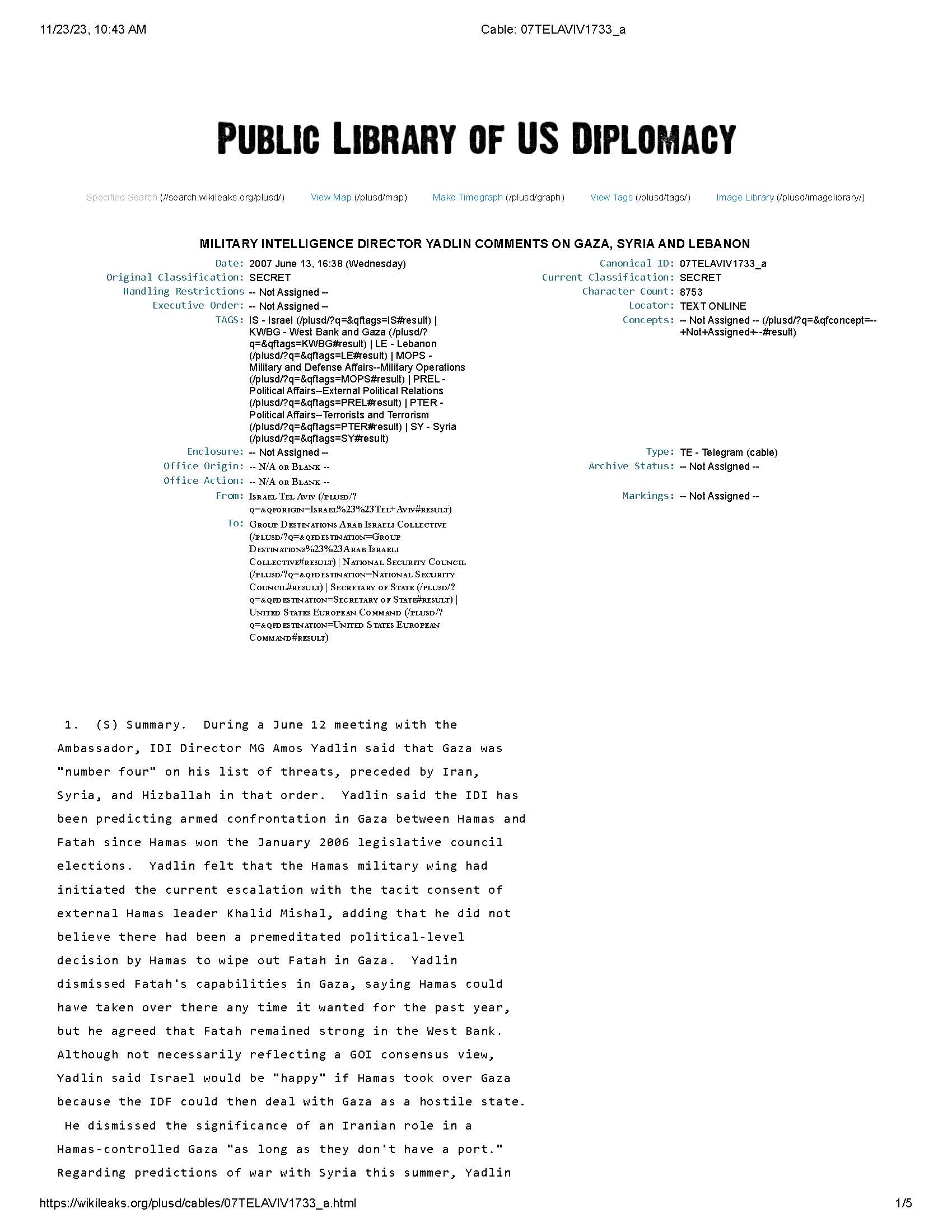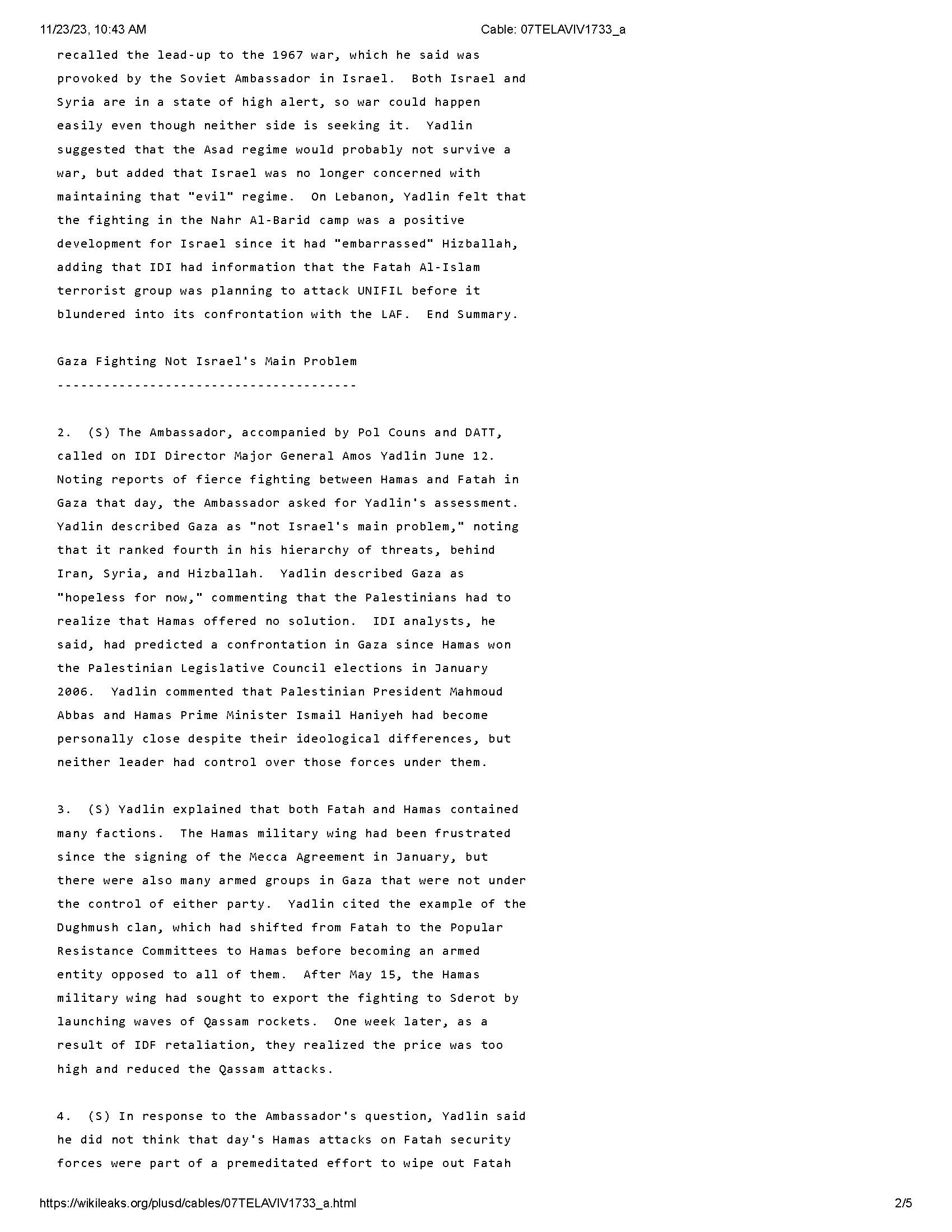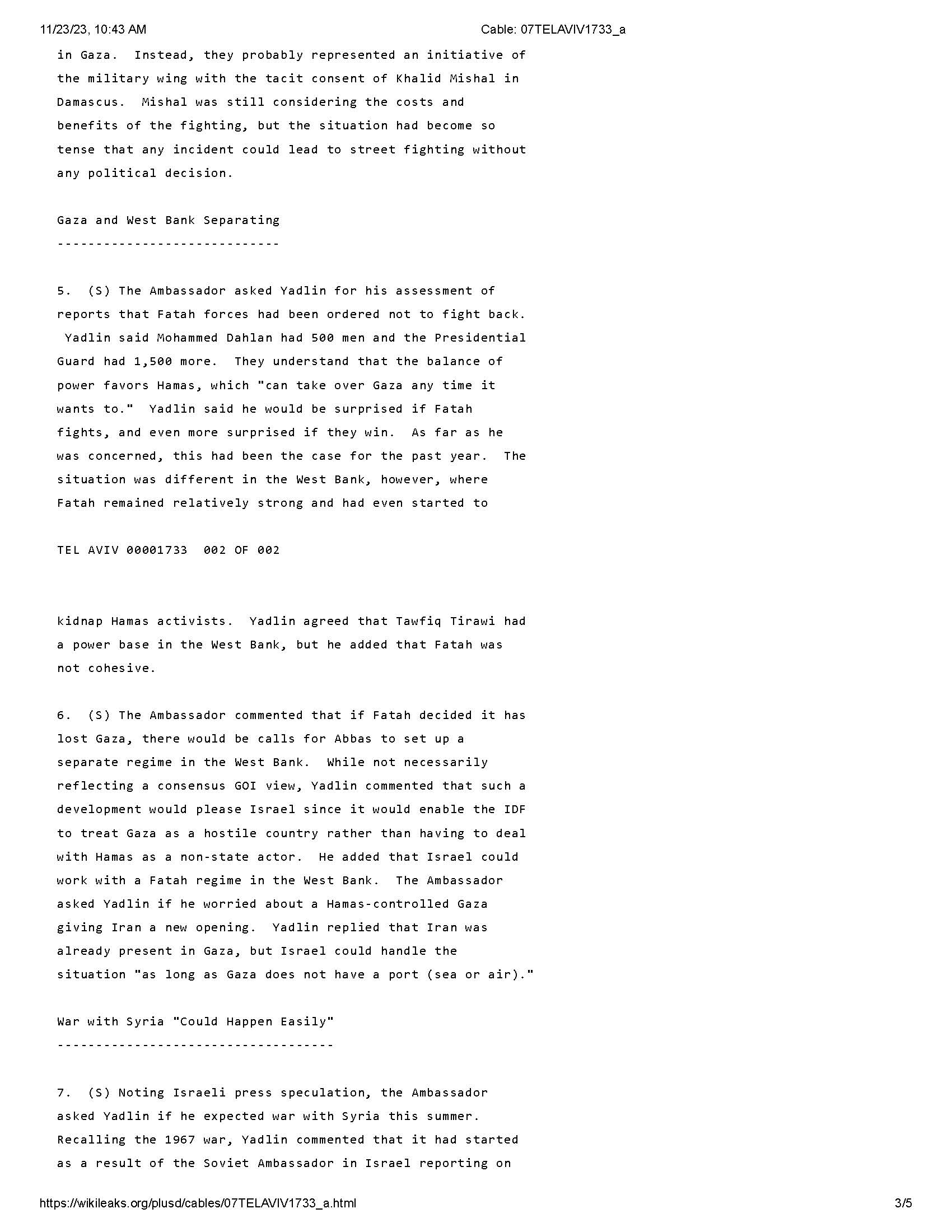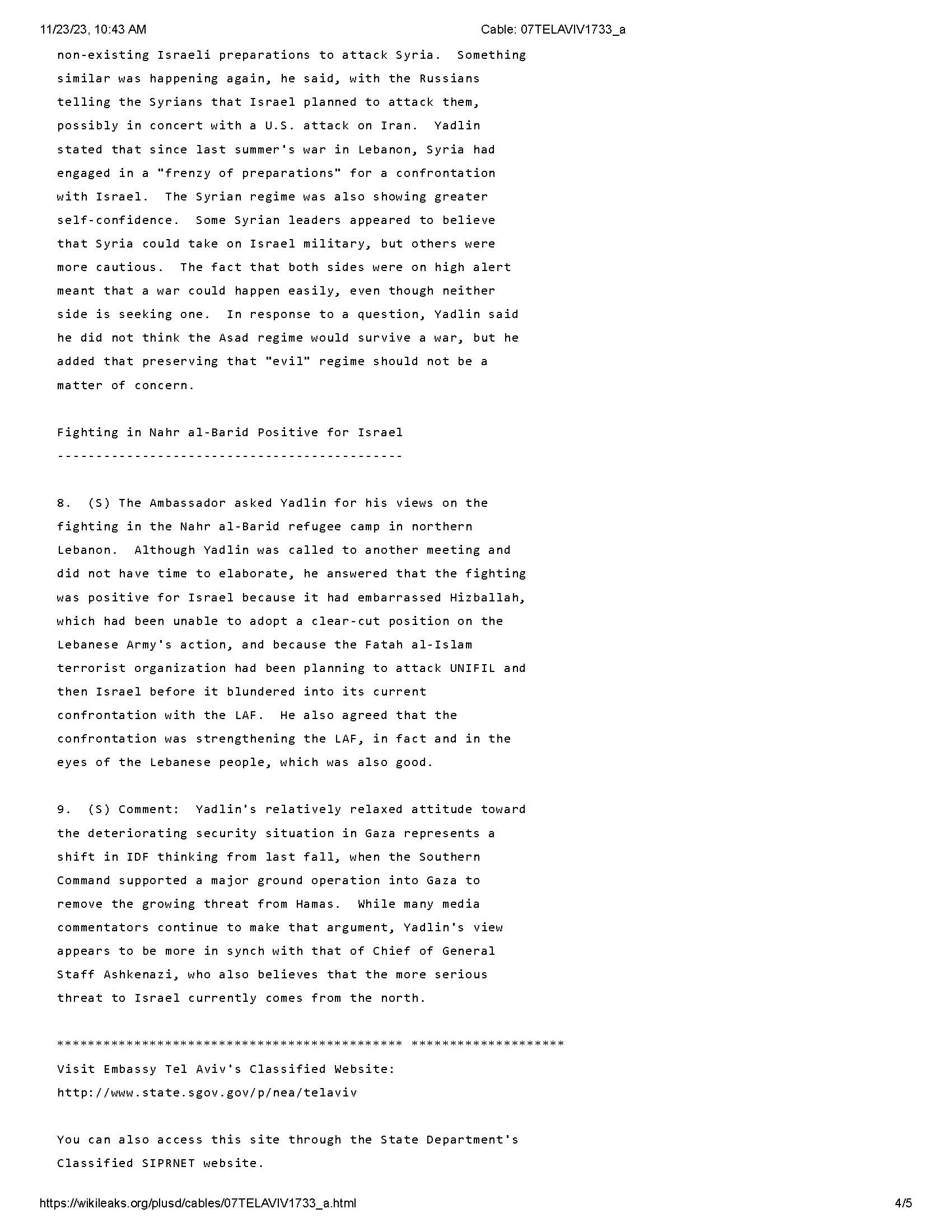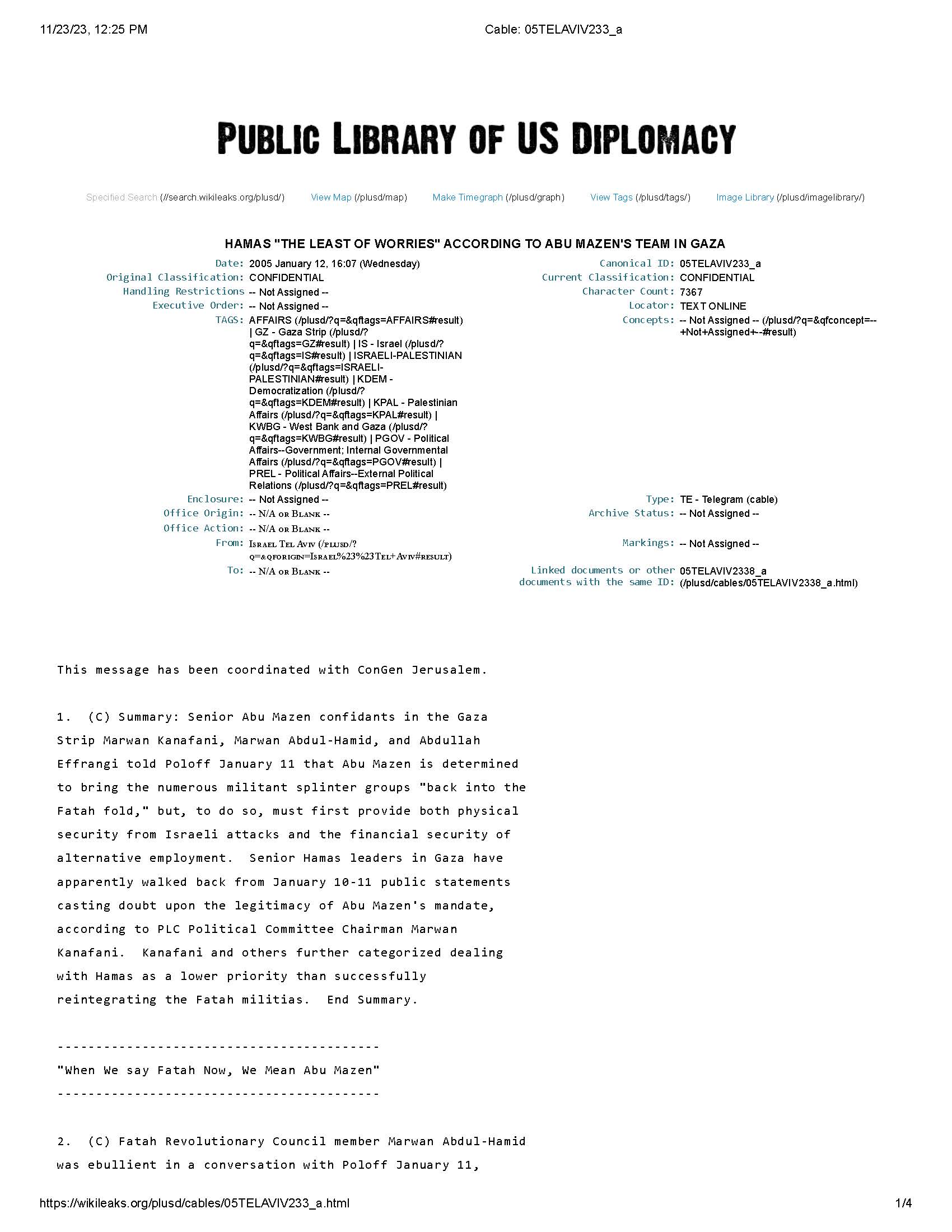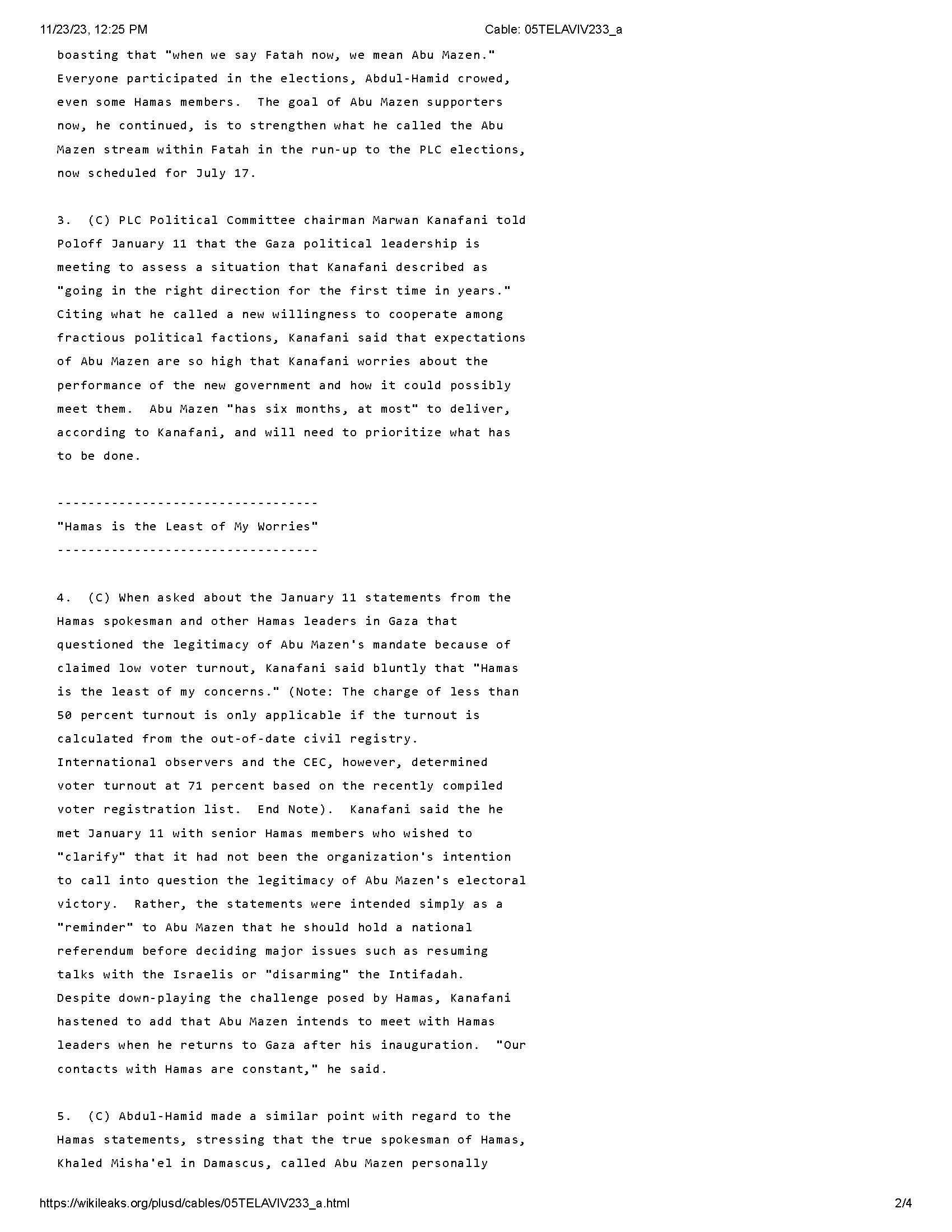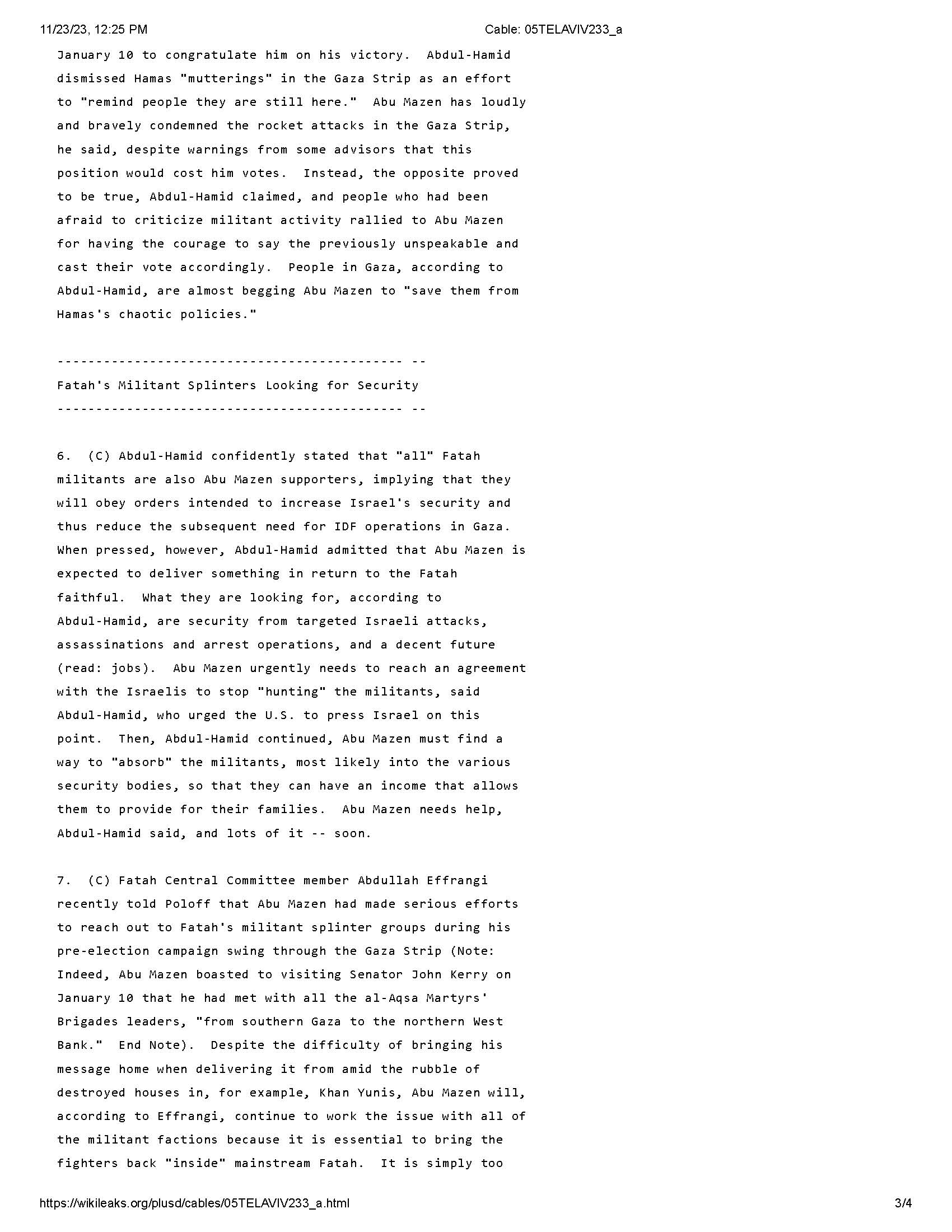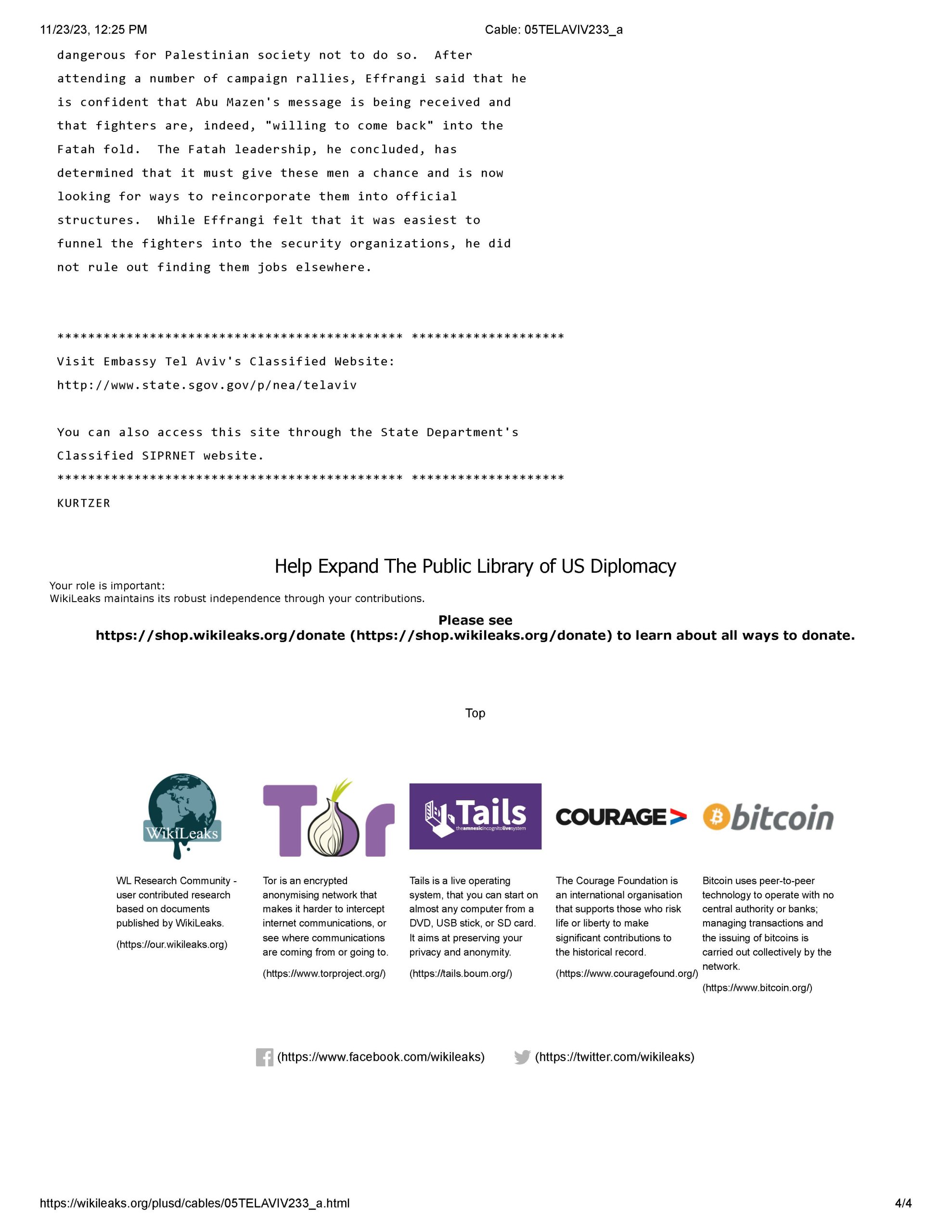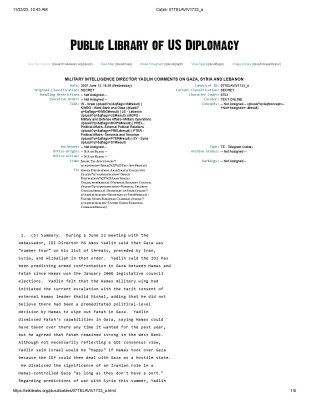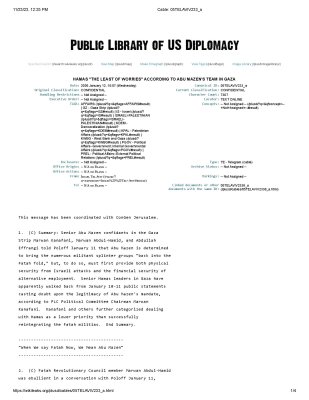Since the October 7 massacre people on the left and right alike have been arguing that the roots of the disaster lie in Israel’s disengagement and unilateral withdrawal from the Gaza Strip in August 2005. A review of American documents from the time of the disengagement shows that these claims are completely baseless.
It’s largely forgotten now, but before the disengagement, the Israel Defense Forces was not stationed in the cities, villages or refugee camps of the Gaza Strip; its job was to encircle the settlements intensively. The presence of Israeli civilians in Gaza impeded and hampered the IDF’s activity, not the opposite. Contrary to claims being voiced today to the effect that Gush Katif – as the main settlement bloc there was known – was Israel’s first “layer of defense,” the settlements were injurious to the state’s security. That fact is emphasized repeatedly by most personnel of the security establishment. Nor did the recurring rounds of violence begin with Israel’s pullout from Gaza. For example, the military presence there did not prevent Operation Rainbow or Operation Days of Penitence in 2004 (the first directed at threats in the southern part of the Strip, the latter, several months later, at the north). The firing of rockets and mortar shells into Israel also preceded the disengagement by several years. Hamas’ improvement of its military capabilities was also not significantly influenced one way or the other by the fact that the IDF was safeguarding a few thousand Jews in the Gaza Strip; and the organization’s political strength began to grow – as the municipal elections of late 2004 and early 2005 showed – even before the withdrawal, and did not derive from it.
The connection established in the Israeli public mind between the disengagement from Gaza and the Hamas takeover of the Strip in June 2007 is the result of skillful political propaganda. This argument ignores the fact that in any event, a few thousand settlers did not have the power to prevent Hamas’ takeover of the Strip’s millions of people
On the left side of the map, the criticism is directed at the at the unilateral character of the disengagement and argues that the planners of the disengagement intended to “foil” a Palestinian state. But even many critics of the disengagement agree that it was consistent with the country’s division into two states, and also with the “road map” drawn up by President George W. Bush in 2002. This was also the perception of the State Department, resulting in an exchange of messages between Sharon and the president. In May 2004, the representatives of the Quartet (U.S., Russia, United Nations, European Union) announced support for the disengagement as part of the road map.
Attorney Dov Weissglas, Prime Minister Ariel Sharon’s adviser and one of the architects of the pullout, wrote that “its implementation was coordinated fully with the Palestinians: In many lengthy meetings, across tens of hours, arrangements were discussed to deploy the Palestinian security forces… Detailed arrangements were discussed concerning the future of the property that would remain in the settlements after the evacuation… We helped as much as we could… to arrange all the economic-civilian aspects between Israel and the Palestinians after the withdrawal. The more time that passed, the more willingness and satisfaction the Palestinians displayed over Israel’s withdrawal from Gaza.” So tight was the coordination that Weissglas was able to relate that the Palestinians’ apprehensions had given way to far-reaching aspirations, such as Abbas’ remark to Omar Suleiman, Egypt’s chief of intelligence, that “Gaza should be turned into Singapore.”
The conflict between Fatah and Hamas, which reached its climax in Hamas’ takeover of Gaza in June 2007, surprised everyone involved – Israelis and Palestinians. At the same time, the opinions and assessments in Israel about any benefit that might accrue to Israel from Hamas’ takeover of Gaza were not uniform. Amos Gilad, for example, who was director of policy and political-military affairs in the Defense Ministry, speaking with a State Department official in September 2005, said that, “we will be lost if Hamas becomes a true force and part of political life.” The director of Military Intelligence, Amos Yadlin, saw things differently. In a June 2007 conversation with the U.S. ambassador to Israel, Richard Jones, just a few days before Hamas seized control of the Gaza Strip – the content of the discussion appeared in Wikileaks – Yadlin said Israel would be “happy” if Hamas took over Gaza, because the IDF would then be able to “deal with Gaza as a hostile state.” The ambassador wondered whether Yadlin wasn’t worried about Hamas’ ties with Iran. Yadlin “dismissed the significance of an Iranian role in a Hamas-controlled Gaza ‘as long as they don’t have a port.’”
Immediately after the seizure by Hamas of Gaza, the Israeli government under Prime Minister Ehud Olmert adopted a policy of a tight siege on the Strip, which prevented people from entering and leaving, and blocked the entry of anything other than humanitarian aid. That notion proved to be wrong, as Hamas only grew more powerful.
Someday we will learn the full scope of moves and policies pursued by Netanyahu up until we arrived at October 7. The disengagement, in any event, has absolutely nothing to do with it.
The full article by Akevot’s researcher Adam Raz was published in the “Haaretz” supplement

